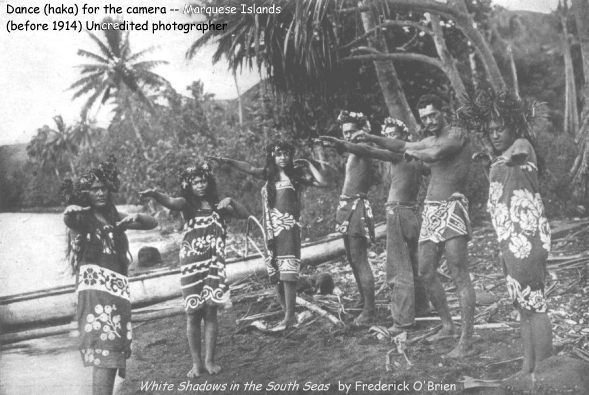 Dance poses for the camera.
Dance poses for the camera. The
sarongs are probably cotton: white with
one vivid color overprint:
Red, blue, green, purple etc. This could be everyday costume
through today.
* Men's everyday
short sarongs (photo from before
1914, but could be modern dress) *
"Oh-Noes! It's a hoo-man sacrifice!" Posed for the camera,
these guys show
4 action variations on the basic men's sarong.
* Very
informal men's & boy's beachware. Loincloths, sarongs, &
pants. *
These guys are watching the events at some beachside French colonial
celebration.
Note the colonial Euro kid in "tropical whites".
* Men's
plantation work wear: Harvesting feis, "mountain bananas". *
Note the machete-style work knife, and a hat that was fashionable for
1910.
Hat choice would follow fashion. That looks to be a multi-colored
sarong,
and I'm guessing that might be a sunflower in the design.
* Carrying
bunches of feis on a pole.
*
Two-color sarong. He wears a wreath of ferns and leaves.
Headgear fashion that never goes out of fashion.
*
Ferns
for fans (& fly-swatter in Paradise) *
Woman with a leaf wreath & sarong cloth. This must be an informal
picnic.
* (Mature
image) Antoinette, a dancer, in a semi-topless
sarong, *
with braided hair ribbons, and a basket as a purse.
Pascual and his friends are probably
dressed up for a party.
For the women, the white dresses would be OK for church,
(and similar events) if they added a big wide-brimmed floppy white hat.
Hem lines and sleeve length might change through the years.

